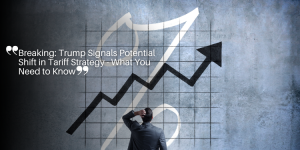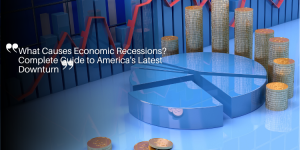The Hidden Financial Strain: Understanding America’s Record-Breaking Credit Card Minimum Payments
The Paradox of a Strong Economy and Rising Financial Stress
Despite the apparent strength of the U.S. economy, a troubling trend has emerged: a record-high 10.75% of credit card accounts are making only the minimum payments.
This statistic, reaching its peak from July through September 2024 according to the Philadelphia Federal Reserve, signals a growing financial stress among American consumers that broader economic data fails to reflect.
Aggregate Data Conceals Economic Disparities
The aggregate economic data often showcases positive indicators like low unemployment rates and GDP growth.
However, these numbers can be misleading as they mask the significant disparities between different income levels.
For instance, upper-income consumers generally have more disposable income and financial security, which allows them to maintain their expenditures and even offset struggles faced by lower-income segments.
This creates a facade of overall economic stability, hiding the precarious financial situation of a large portion of the population.
The Hidden Struggles of Lower-Income Consumers
While upper-income households can often weather economic fluctuations, lower-income households are increasingly struggling to manage basic expenses.
Since early 2022, many lower-income families have experienced negative savings rates, leading them to deplete their emergency funds.
As a result, these families have had to rely more heavily on credit to cover everyday spending, exacerbating their financial vulnerability.
Impact on Financial Health
The reliance on credit among lower-income groups has resulted in escalating credit card debts and an uptick in delinquency rates.
The Philadelphia Federal Reserve highlighted that delinquency rates have more than doubled from their post-pandemic lows, reflecting the deteriorating financial health of many consumers.
This trend is a stark reminder of the widening income divide and its impact on financial security, underscoring the need for targeted financial strategies.
The growing financial stress and high delinquencies amidst a supposedly strong economy is a paradox that calls for closer scrutiny.
Examining strategies for managing credit card debt becomes essential as we navigate these complexities.
The Reality for Average Americans
Navigating the seemingly robust U.S. economy is more challenging than it appears for many average Americans.
Beneath the surface of positive economic indicators lies a sobering financial reality for a significant portion of the population.
Burdened by Debt
The average American household carries $10,563 in revolving credit card debt, creating a heavy financial burden that impacts day-to-day life.
Despite some economic gains, this debt has grown significantly, increasing by 52.5% since 2021.
Such growth indicates that more Americans are relying on credit cards to manage their expenses, a trend that exacerbates financial strain over time.

Struggling to Make Ends Meet
A striking 73% of workers find it difficult to cover anything beyond basic living expenses.
This statistic highlights the day-to-day struggles that many face despite the larger economy performing well.
As inflation drives up costs and wages fail to keep pace, the average American worker sees their disposable income shrink, leaving them with fewer options to manage unexpected expenses without resorting to credit.
The Expanding Use of Credit
With credit card balances increasing, it’s clear that many Americans are leaning more heavily on credit to maintain their standard of living.
This reliance on credit is not just for luxury or discretionary spending but often for essential expenses.
Delinquency rates on credit cards have doubled since the post-pandemic lows, reflecting the challenges Americans face in managing their debt loads effectively.
As we move forward, it’s crucial to understand these underlying financial difficulties.
They paint a picture of an economic divide where lower and middle-income households bear the brunt of financial stress, relying more on credit and struggling to save.
Addressing these issues with targeted financial strategies can help mitigate the worsening debt spiral and provide some relief to the average American household.
Understanding the Income Divide
Rising Debt and Lower Savings
Despite a seemingly strong economy, lower-income Americans have found their financial situations growing more precarious since early 2022.
Saving rates for these households turned negative as they depleted their reserves just to cover everyday living expenses.
This financial strain has left many scrambling to keep up with even the basics. The reliance on credit has skyrocketed, with credit cards becoming a lifeline rather than a convenience.
The Basic Expense Dilemma
For many lower-income households, using credit for basic necessities has become the norm.
This increased reliance on credit means that as expenses rise, so do the corresponding debts.
It’s a vicious cycle that has led to ever-increasing credit card balances.
Statistics illustrate this point starkly: credit card balances have grown by a significant 52.5% since 2021.
Escalating Delinquency Rates
This dependency on credit is undoubtedly unsustainable, leading to a surge in delinquency rates.
Delinquency rates, defined as credit card payments that are more than 30 days past due, have doubled since hitting post-pandemic lows.
From July through September 2024, the delinquency rate hit 3.52%, a stark contrast to the 1.57% observed in the immediate aftermath of the pandemic.
The Impact of Higher Interest Rates
Compounding these issues are higher interest rates, making it even more challenging for lower-income households to manage their debt.
Higher rates mean that even if a family manages to stay current with their payments, a significant portion goes toward interest, rather than chipping away at the principal balance.
This is a major reason why more individuals are just making minimum payments, contributing to the financial stress indicated by the record-high percentage of such accounts.
By exploring and addressing these income disparities, we can better understand the broader challenges that the average American faces.
Without a doubt, recognizing these issues is crucial for developing effective solutions to manage and ultimately reduce credit card debt.
The Debt Spiral Effect
As America’s economic stress deepens, total credit card debt has skyrocketed to $645 billion by Q3 2024, continuing its drastic rise every quarter since the pandemic.
This sharply contrasts the aggregate economic figures suggesting overall prosperity.
The harsh reality? Lower and middle-income households are bearing the brunt of this debt burden while upper-income consumers seemingly thrive.
Rising Debt Levels
The statistics paint a grim picture.
With an alarming 52.5% increase since 2021, revolving credit card balances now average around $10,563 per household.
This situation has been exacerbated by the shift in saving trends.
Lower-income households have seen their saving rates plummet into the negative since 2022.
This has left them increasingly dependent on credit for their everyday needs.
Surging Delinquency Rates
| 📅 Period | 📊 Delinquency Rate | 📌 Description |
|---|---|---|
| Mid-2021 | 1.57% | Delinquency rates hit a post-pandemic low as stimulus measures and savings helped households stay afloat. |
| Q3 2024 | 3.52% | More than double the previous rate, indicating growing financial strain among American households. |
The Interest Rate Dilemma
High interest rates have added to the burden, making debt servicing considerably more challenging.
With the average credit card interest rate lingering around 20.27%, the cost of borrowing continues to inflate.
For many, making only the minimum payments means remaining in debt for decades and paying a fortune in interest.
Facing this reality, many households are feeling trapped in a debt spiral with no clear way out.
However, understanding and employing effective debt management strategies can make a significant difference.
Strategies for Managing Credit Card Debt
When faced with mounting credit card debt, it’s crucial to address it head-on to avoid falling into a never-ending debt cycle.
Here are some effective strategies to help you regain control of your financial situation.
Importance of Paying More Than Minimum Payments
Making only the minimum payment on your credit card balance can trap you in debt for decades and cost you thousands of dollars in interest.
For example, if you have an average credit card balance of $6,380 with a 20.27% interest rate, you’d remain in debt for over 18 years if you made only the minimum payments each month.
By contributing more than the minimum, you reduce the principal faster and save significantly on interest fees.
Prioritize paying down high-interest debt to accelerate your journey to financial freedom.
Utilizing Balance Transfer Cards with 0% Introductory Rates
Consider applying for a balance transfer card, which offers a 0% introductory interest rate for a specified period.
This strategy allows you to pay off your balance without accruing additional interest.
For instance, transferring your debt to a card with a 0% interest rate for 21 months could help you eliminate the average debt by making consistent payments of about $300 per month.
It’s important to read the fine print, as some cards charge a balance transfer fee, but the long-term savings can be substantial.
Seeking Help from Nonprofit Credit Counseling Agencies
If your credit card debt feels unmanageable, seek assistance from a reputable nonprofit credit counseling agency.
Credit counselors can help you develop a personalized debt management plan and offer guidance on budgeting and financial planning.
These agencies provide valuable resources and support to keep you on track towards reducing and eventually eliminating your debt.
Working with a counselor can help you negotiate lower interest rates and create a structured repayment plan.
Taking proactive steps to address your credit card debt not only alleviates financial stress but also sets you on the path to a healthier, more stable financial future.







